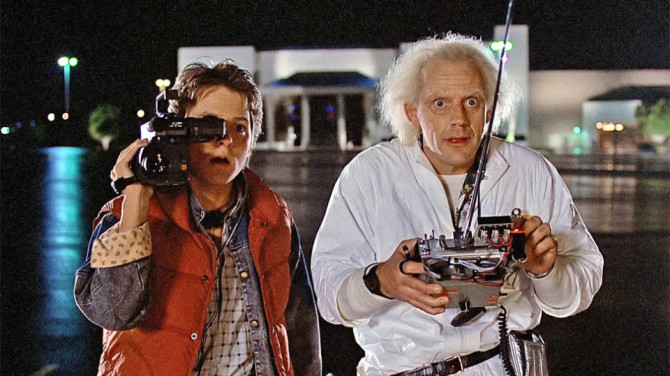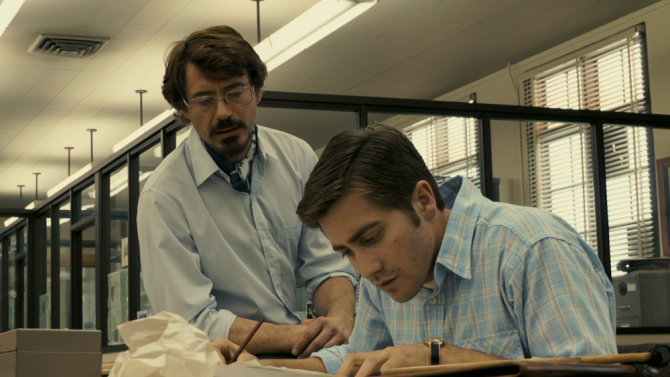An exposition trick that’s guaranteed to make you a better screenwriter.
The other day we talked about story ideas so steeped in information, they just aren’t worth writing. Because doing so would amount to 120 straight minutes of exposition dumps. My contention in that review was that these scripts are difficult even for professionals to write, writers who’ve spent countless hours throughout multiple screenplays learning to dispense exposition in a covert and seamless way. To a writer who’s only written a couple of scripts to have to handle that amount of exposition? Forget about it.
So today I thought I’d help those aspiring writers get a little closer to becoming exposition ninjas by teaching them an exposition trick, which I call “Dessert Exposition.” It’s a very simple concept. I want you to imagine that you and I are sitting at a table and I’m telling you about my day. Now, my day today was boring. I didn’t hit a last second shot to win the game. I didn’t shoot any zombies who were trying to bite me. It was one long list of mundane tasks. How long before you think you’ll be bored listening to me? I’m guessing it’s going to be fast.
However, I want you to imagine the same scenario except, this time, I reveal a plate with your favorite dessert on it. Maybe it’s chocolate chip cookies. Maybe it’s salted caramel cheesecake. Maybe it’s Ben and Jerry’s Cherry Garcia ice cream. I’ll let you guys debate the best dessert in the comments. I then say to you, “You can have this. But first I want to tell you about my day.” I know, I’m an evil person. But guess what? Your interest in my day just went up x100. You are going to be much more willing to listen to me drone on about how mad I was that Doordash wouldn’t accept my PayPal account now that you know, when I’m finished, you get to have your favorite dessert.
In today’s exposition lesson…
My day = the exposition.
Dessert = a valued story beat that the reader is looking forward to.
One of the most famous examples of this is the “Doc explains time travel to Marty” scene at the Twin Pines Mall in Back to the Future. There is a ton of important exposition that needs to be conveyed in this scene (car only works on nuclear power, 88 miles per hour, 1.21 gigawatts, the flux capacitor, how to program the time machine). It’s a bit of a screenwriting nightmare, to be honest, having to convey that much information in a single scene.
But, Zemeckis and Gale overcome that by using Dessert Exposition. The dessert, in this case, is seeing the actual time traveling in action. That is the salted caramel cheesecake Zemeckis is holding up on the plate to get all of us effortlessly through the scene. Just to be clear, there are other methods being used to make the exposition work in this scene, but I don’t want to confuse you. The point is, we’re willing to listen to all of this exposition, in large part, because of the dessert at the end of the scene.
Now, what an amateur might’ve done with this scene is place it in, say, Doc’s garage (the one that opens the movie with the Rube Goldberg dog food device) and have Doc explain, with no dessert in sight, how time travel works. I read similar scenes like this all the time in amateur scripts and they rarely work because the exposition gets too technical or too boring, and there’s no reward for getting through it.
The goal with exposition is always the same. You’re trying to make it sound like it’s not exposition at all, but rather just people talking. That’s what dessert exposition does. When people watch that Back to the Future scene, they’re not thinking, “This information is being meticulously doled out to me.” They’re thinking that Doc’s just explaining to Marty how this really cool thing works.
Let’s look at how we can use this tool more practically. Let’s say you’re writing a serial killer script in the vein of Zodiac and you have a pair of detectives working the case. Now, let’s say that Detective A had a father who was also a detective who worked the case 25 years ago and you need a scene where Detective A gives Detective B all this exposition about what his father found in the case, because you’re going to pay some of that exposition off later in the story.
How can we use Dessert Exposition in this scenario?
Well, one way is for Detective A to call Detective B and tell him he “found something big.” Come over right away. So Detective B hurries over to Detective A’s place. Now, what is the amateur screenwriter going to do here? He’s probably going to jump right into what Detective A found, right? That’s not how you do it. You’re ruining a great opportunity to utilize the audience’s anticipation for learning this new info.
So what the pro screenwriter does is he has Detective A sit Detective B down. Detective B says, “Well, what is it? What did you find?!” And Detective A says, “Did I ever tell you what my dad found in Montana?” Which leads to a long exposition-heavy monologue where Detective A lays out all that exposition he needed to lay out about the dad. However, since he first presented the dessert (“I found something big”), we’re willing to sit through it. Maybe even excited to hear it! Because we know we’ll be rewarded in the end. That’s the power of good dessert exposition.
The cool thing about this device is that it’s not limited to exposition. If you want to have a fun playful dialogue scene that doesn’t necessarily move the story forward, you can use dessert exposition to do it. The opening scene in Inglorious Basterds is a good example. Tarantino gives us a valued story beat to look forward to (that Jews are hiding under the house) allowing Hans Landa to riff on all sorts of things, like how he got his nickname, the origin of rats, even how yummy milk is.
To summarize, dessert is the scene’s oxygen. If you try to pull off extensive exposition without it, there’s a high probability the scene will suffocate.
Try it out in your script now. It’s fun!



